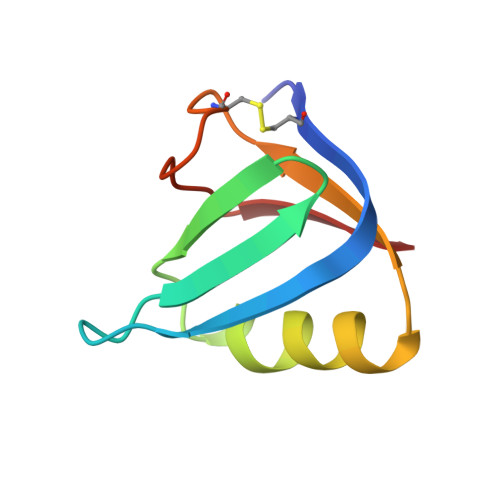Shiga-like toxins are neutralized by tailored multivalent carbohydrate ligands.
Kitov, P.I., Sadowska, J.M., Mulvey, G., Armstrong, G.D., Ling, H., Pannu, N.S., Read, R.J., Bundle, D.R.(2000) Nature 403: 669-672
- PubMed: 10688205
- DOI: https://doi.org/10.1038/35001095
- Primary Citation of Related Structures:
1QNU - PubMed Abstract:
The diseases caused by Shiga and cholera toxins account for the loss of millions of lives each year. Both belong to the clinically significant subset of bacterial AB5 toxins consisting of an enzymatically active A subunit that gains entry to susceptible mammalian cells after oligosaccharide recognition by the B5 homopentamer. Therapies might target the obligatory oligosaccharide-toxin recognition event, but the low intrinsic affinity of carbohydrate-protein interactions hampers the development of low-molecular-weight inhibitors. The toxins circumvent low affinity by binding simultaneously to five or more cell-surface carbohydrates. Here we demonstrate the use of the crystal structure of the B5 subunit of Escherichia coli O157:H7 Shiga-like toxin I (SLT-I) in complex with an analogue of its carbohydrate receptor to design an oligovalent, water-soluble carbohydrate ligand (named STARFISH), with subnanomolar inhibitory activity. The in vitro inhibitory activity is 1-10-million-fold higher than that of univalent ligands and is by far the highest molar activity of any inhibitor yet reported for Shiga-like toxins I and II. Crystallography of the STARFISH/Shiga-like toxin I complex explains this activity. Two trisaccharide receptors at the tips of each of five spacer arms simultaneously engage all five B subunits of two toxin molecules.
- Department of Chemistry, University of Alberta, Edmonton, Canada.
Organizational Affiliation:



















